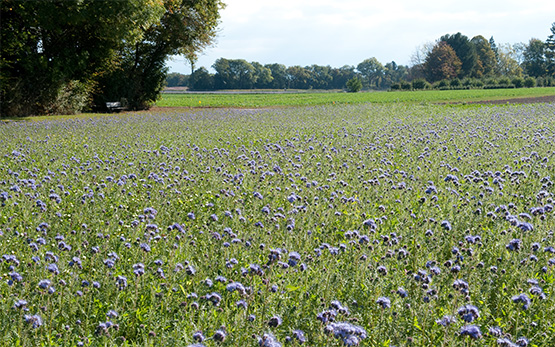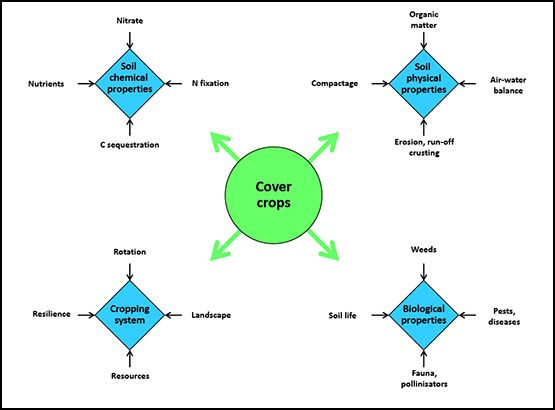Cultivation of cover crops during fallow periods offers a soil protection fulfilling several functions: reduction of erosion, nitrogen absorption limiting leaching, weed control, soil fertility improvement, etc.
Numerous species can potentially be used as cover crops, but only a small number is currently cultivated in practice (mainly mustard and phacelia). Here we study the cover crop potential of a large number of species in relation with expected agrosystemic services, as well as the best way of designing species mixtures.
- Screening of known, potential and new species in order to characterize their properties and functions
- Test of species mixtures to find out synergistic (e.g. legumes) and competitive (e.g. allelopathy) effects, and to understand species interactions in order to develop specific associations
- Role of cover crops in weed control to limit the use of herbicides and especially as an alternative to glyphosate
- Integration of the cover crops in the cropping system to evaluate their impacts at mid and long term
- CC4CA : Cover Crops for Conservation Agriculture (PNR68 Sustainable use of soil as a resource)
Justes E., Beaudoin N., Bertuzzi P., Charles R., Constantin J., Dürr C., Hermon C., Joannon A., Le Bas C., Mary B., Mignolet C., Montfort F., Ruiz L., Sarthou J.P., Souchère V., Tournebize J., Savini I., Réchauchère O., 2012a. Réduire les fuites de nitrate au moyen de cultures intermédiaires : conséquences sur les bilans d'eau et d'azote, autres services, écosystémiques. Rapport d'étude, INRA (France).
Büchi, L., Wendling, M., Amossé, C., Jeangros, B., Charles, R. 2019. Cover crops to secure weed control strategies in a maize crop with reduced tillage. Field Crops Research, https://doi.org/10.1016/j.fcr.2019.107583







